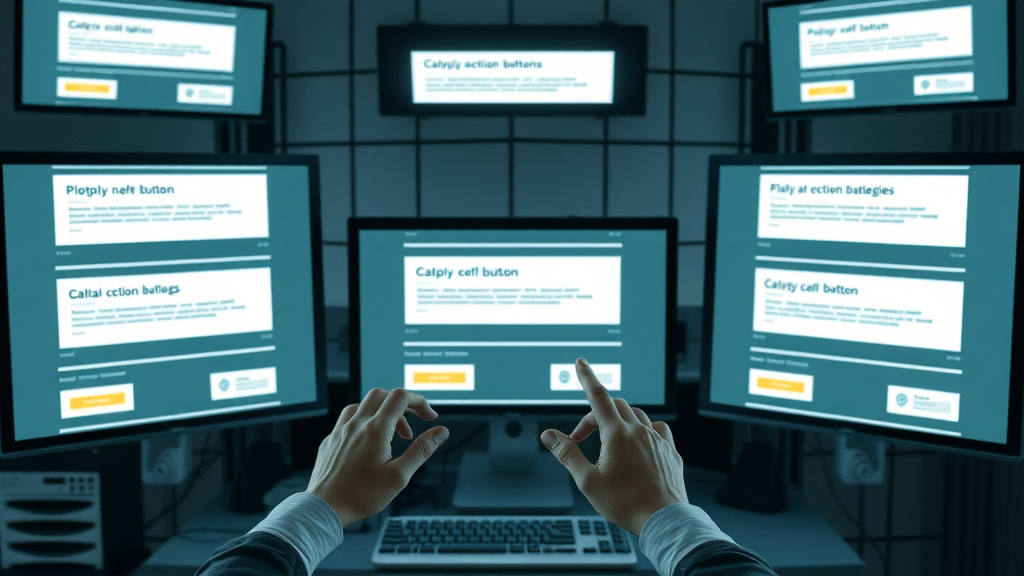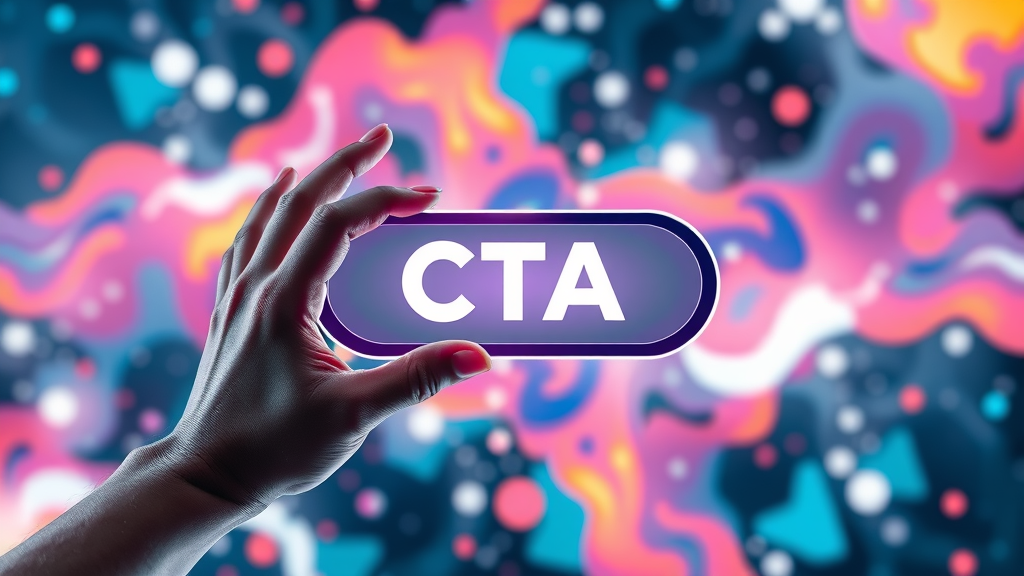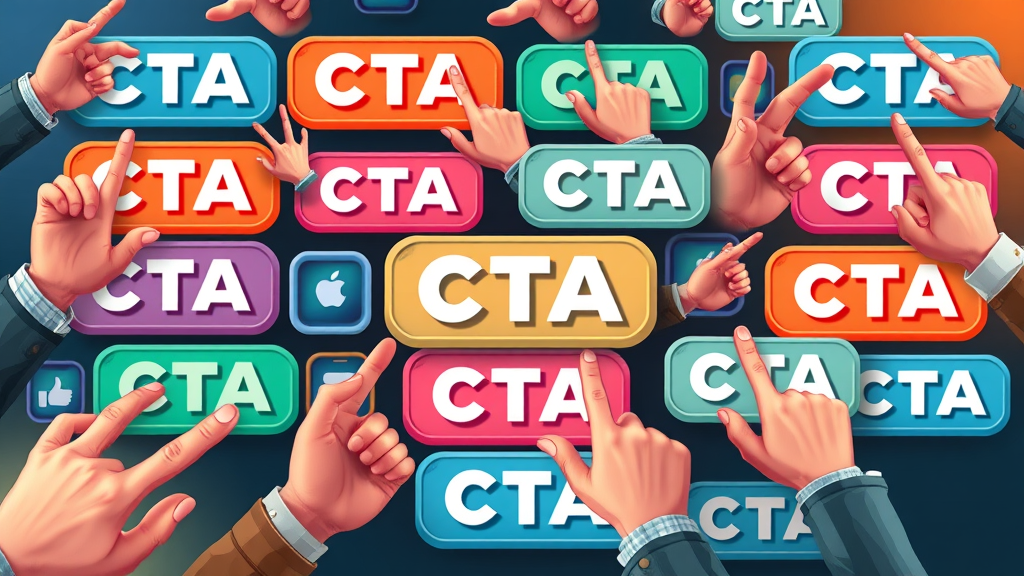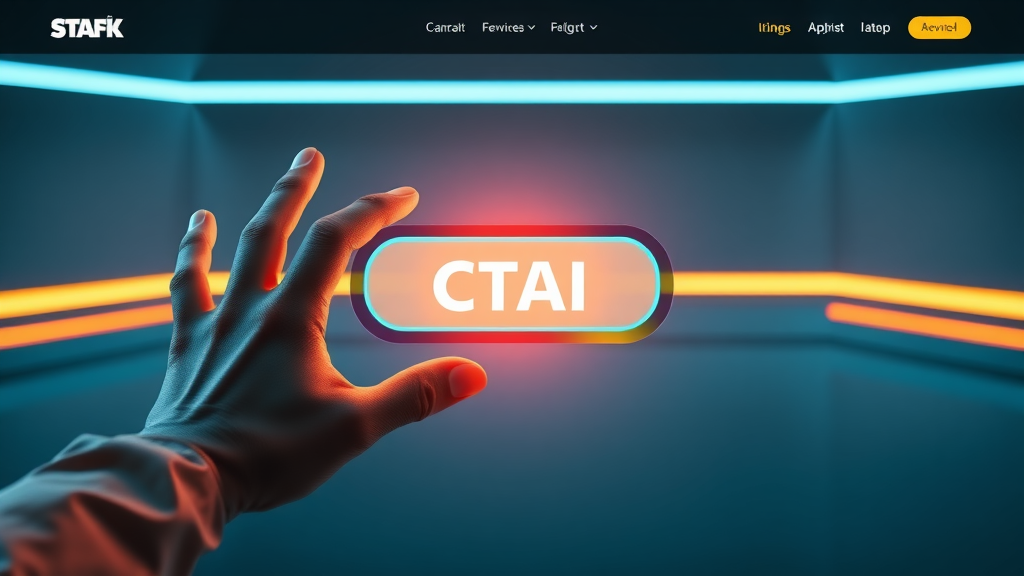Did you know that simply tweaking your call to action button text can boost conversion rates by over 200%? That’s right—crafting compelling calls to action isn’t just a design detail; it’s a proven way to transform passive visitors into loyal customers. In this comprehensive guide, you’ll discover call to action best practices, real-world action examples, and design secrets inspired by the most effective calls to action online. Whether you’re refining a blog post, enhancing a landing page, or rethinking your ad campaign, every insight here is geared to ignite more clicks—instantly.
- Actionable call to action best practices that work for any web page or landing page
- Effective call to action examples from ecommerce, SaaS, nonprofits, and service providers
- The secrets behind high-converting cta buttons and attention-grabbing button text
- Design and placement strategies to make every action button more clickable
- How to write and test CTA copy that connects with your target audience

Unlocking Engagement: Why Call to Action Best Practices Matter

Every great call to action is much more than a simple suggestion—it’s the pivotal moment when a user decides to act. In today’s digital landscape, the most effective calls to action draw the line between a lost opportunity and a thriving customer relationship. Think about the last time you clicked a bold action button offering a free trial, downloaded a guide, or claimed an exclusive offer. That moment of engagement didn’t happen by accident—it was carefully designed using proven call to action best practices .
Modern users are overwhelmed with choices and distractions on every web page and blog post. This is why a powerful CTA button is the anchor that keeps user attention focused and guides them toward your desired action. Sophisticated brands use compelling button text and strong visual dynamics to turn fleeting interest into measurable conversions. Whether for landing pages, email campaigns, or social media ads, failing to leverage high-impact calls to action means missing out on growth and revenue.
Building the Foundation: Core Call to Action Best Practices
What Makes a Call to Action Effective?
- Powerful button text that uses direct, action-oriented verbs
- Strategic cta button design with prominent placement
- Creating a sense of urgency (“Limited Time Only”, “Act Now”)
- Appealing white space and uncluttered layouts for easy scanning
- Matching your target audience intent through relevant and personalized content
"A small change in your action button can multiply your conversion rate—often with just a few words of button text."

To create an effective call to action , combine active, compelling button text with standout cta buttons placed for high visibility. The best calls to action heighten the user’s sense of urgency with language that drives immediate action while leveraging white space to draw the eye. Always ensure your action button is tailored to the intention of your target audience—what works for an ecommerce landing page may not work in a B2B email campaign. Iterating on small elements like color, phrasing, and placement can make dramatic improvements in your conversion rate and overall business results.
Winning Language: Crafting Button Text That Converts with Call to Action Best Practices
Guidelines for High-Impact Button Text
- Use active verbs (“Start”, “Download”, “Book”, “Claim”, “Join”)
- Personalize whenever possible (“Your”, “My”, “For You”)
- Focus on benefit-driven messaging —make the value clear (“See Plans”, “Get Free Guide”)
- Keep it concise ( cta button phrasing should be under 5 words)

Optimized button text transforms your cta button from an afterthought into your web page’s primary conversion engine. Words matter: a simple phrase like “Download Your Free Guide” consistently outperforms generic terms like “Submit” or “Click Here.” The most effective call to action speaks directly to the reader with a clear value proposition and a strong action verb. Every word in the action button should reassure the user that taking the next step is easy and rewarding.
Benefit-driven cta buttons turn interest into action. For example, on blog posts offering free resources, use button text like “Get My Free Ebook.” On ecommerce sites, “Claim Offer” or “Buy Now” works better than “Learn More.” Always test variations to discover which button text resonates best with your target audience .
Button Text Versus Action Button: Which Drives More Engagement?
| Button Text | Action Button Style | Click-Through Rate (%) | Target Audience Context |
|---|---|---|---|
| “Get Started Now” | Bold, contrasting, rounded | 8.7 | B2C, SaaS |
| “Download Free Guide” | Soft edges, color highlight | 6.9 | Blog, Content Marketing |
| “Submit” | Neutral, flat | 2.3 | General |
| “Claim Offer” | 3D effect, bright | 10.1 | Ecommerce, Promotions |
The data is clear: tailored, benefit-driven button text in a visually striking action button consistently outperforms generic plain-text options. Matching style and wording to the user’s intent on each landing page or blog post will significantly increase your conversion rates.
Showcasing Excellence: Effective Call to Action Best Practices in Action
Curated Call to Action Examples Across Industries
- Ecommerce: “Claim Your Discount”, “Shop the Sale”, bright cta button, prominent above the fold
- SaaS: “Start Free Trial”, “Schedule a Demo”, color-contrasted action button, simple icon
- Nonprofits: “Donate Now”, “Make a Difference”, impactful button text with cause-focused color scheme
- Service Providers: “Book Your Free Session”, “Get a Quote”, action button paired with testimonial snippet

Across industries, the most effective call to action examples share several traits: urgency, relevant value, and seamless integration with the web page’s design. For ecommerce, action examples like “Claim Offer” with an eye-catching cta button design drive users to complete purchases quickly. In SaaS or software, “Start Free Trial” in a bold color above the fold plays on the fear of missing a great product experience and prompts immediate engagement. Nonprofits find success with strong button text focused on emotional benefits, such as “Make a Difference,” making it clear what the desired action achieves.
Secondary CTA Techniques for Conversion Optimization
Not all visitors are ready to commit to a primary action button . Secondary cta buttons provide a lower-friction option, such as “Learn More,” “Watch Video,” or “Read Success Stories.” These secondary calls to action nurture hesitant users down the funnel, building trust and increasing the chances of eventual conversion.
Secondary CTA techniques often include using different colors or button shapes to signify alternative pathways without distracting from the primary action. For instance, on a SaaS signup landing page, pairing a strong “Start Free Trial” button with a subtle “View Features” link empowers users to explore at their own pace. This approach maximizes the effectiveness of your overall call to action strategy.
Design Focus: Visual Call to Action Best Practices That Attract Clicks
Perfect Placement: Where to Position Your CTA Button for Maximum Impact
- Above the fold: Place the primary cta button where users first land for maximum visibility
- Below content: Encourage action after delivering value in a blog post or landing page
- Exit intent popups: Offer last-minute value to capture leaving visitors

The positioning of your cta button is as crucial as the action button’s color or text. Users scan in an F-pattern; placing your CTA above the fold grabs attention before distractions set in. However, pairing a compelling action button at the end of a persuasive blog post or landing page keeps engaged users moving toward your desired outcome. Exit intent popups with urgent calls to action—like “Stay for 10% Off!”—help recover otherwise lost conversions and are an easy way to implement call to action best practices for fast results.
Leveraging White Space & Color Theory for Eye-Catching CTA Buttons

Effective cta buttons use white space to stand out, reducing visual clutter and making the action button the focal point. Ample white space around your call to action prevents distraction, guiding the user’s attention exactly where you want it. Color theory is another powerful tool—contrasting shades have been shown to lift conversion rates significantly. For example, a bright orange button on a blue background or a green cta button in a minimalist layout draws the eye instantly.
Combine bold colors with simple shapes and plenty of surrounding white space for irresistible calls to action that drive results. Testing different combinations is essential, especially for mobile devices where screen real estate is limited but user intent remains high.
Optimizing for Your Target Audience: Personalizing Call to Action Best Practices
Fine-Tuning CTAs for Specific Audience Segments
- B2B versus B2C: Use professional, value-driven button text for B2B (“Request a Demo”), and more direct/action-focused for B2C (“Shop Now”)
- Demographic variables: Adapt color, language, and urgency to age, location, or even device (mobile, tablet, desktop)
- User behavior cues: Segment calls to action based on browsing history or previous engagement

Segmentation is the secret weapon of call to action best practices . B2B audiences prefer reassurance and clarity—think “Download the Whitepaper.” For B2C on mobile devices, simplicity, and excitement work best (“Shop Now,” “Claim Your Prize”). Even the same action button can be tailored differently; test more formal language for older users and bolder, trend-conscious copy for younger demographics. Behavioral targeting—like serving a more urgent cta button to repeat visitors or retargeted users—ensures effective calls reach audiences at the right moment.
Testing and Iterating: Using Analytics to Refine Your Call to Action Best Practices
No call to action best practice is truly complete without rigorous A/B testing and ongoing iteration. Use analytics platforms to watch how users engage with each action button or cta button. Track which button text, color, or placement yields the strongest engagement. Test, iterate, and never settle: even a single word change or a slight contrast shift can redefine your conversion rates and customer journeys.
Integrating feedback from analytics on web pages, landing pages, and even email campaigns lets you fine-tune not just your call to action but your entire conversion path. Ongoing optimization is the hallmark of high-performing teams and businesses aiming for long-term growth.
Famous Failures: Avoiding Common Mistakes in Call to Action Best Practices
- Vague or poor button text (“Submit”, “Click Here” with no context)
- Unclear or hard-to-find cta button (“Lost” on a cluttered web page)
- Overwhelming action button layout (too many choices causing confusion)
- Neglecting the sense of urgency (missing “Limited Time”, “Today Only” cues)
- Ignoring your target audience’s expectations or intent

"Even the most beautifully designed calls to action can be ignored if they lack clarity and urgency."
| Common Pitfall | Symptom | How to Fix It |
|---|---|---|
| Poor button text | Low engagement, high bounce rate | Use action verbs and benefit-driven language |
| Unclear CTA button | Visitors miss the main action | Increase contrast, simplify layout, add white space |
| Too many buttons | User confusion, decision paralysis | Focus on one primary and one secondary cta button per page |
| No sense of urgency | Slow response, lower conversions | Add urgency words (“Now”, “Today”, “Ends Soon”) |
| Generic for all audiences | Low personalization, poor engagement | Segment by device, user type, behavior, and use targeted action examples |
Quick Wins: Easy-to-Implement Call to Action Best Practices for Fast Results
- Add a sense of urgency: Use words like “Now”, “Limited Time”, or “Ending Soon” in your cta button
- Use compelling button text: Opt for action, value, and benefit
- Clarify your action examples: Be specific about the result (“Download Your Free Guide”, not just “Submit”)
- Optimize cta button visuals for mobile: Ensure large, clickable areas with high contrast
- AB test your action button: Iteratively improve by testing alternatives for maximum conversion rate gains
Top 5 Action Examples for Immediate Click Boosts

- “Get Started Now”
- “Download Your Free Guide”
- “Book Your Free Session”
- “Claim Offer”
- “Join the Community”
These action examples are tried-and-tested for immediate engagement across platforms, including web pages, social media ads, and mobile devices. Adjust button text to context and always measure impact for ongoing success.
People Also Ask: Common Questions About Call to Action Best Practices

What is an example of a good call to action?
A good call to action is clear, specific, and action-oriented. For example, “Download Your Free Guide” on a blog post tells users exactly what they’ll get and prompts immediate engagement. Effective cta buttons combine strong button text, contrast, and clear value to maximize conversions on any web page or landing page.
What is a good call to action?
A good call to action is concise, uses a strong action verb, and provides a clear benefit to users. Button text like “Get Started Now” or “Book Your Free Session” works because it tells visitors what to do and why it matters. Clarity, urgency, and relevance to the target audience are essential for a compelling cta button.
What is an example of calls to action?
Examples of calls to action include “Shop Now,” “Sign Up Free,” “Claim Your Offer,” and “Join the Community.” Each effective call focuses on simple button text and a strong value proposition. Tailoring action examples to match your landing page and audience leads to higher conversion rates.
What is the best practice for CTA buttons?
The best practice for cta buttons is to use high-contrast colors, clear and actionable button text, sufficient white space, and above-the-fold placement. Test different styles and messages for each target audience segment, and always create cta buttons with a compelling sense of urgency. Continual testing and optimization are key to ongoing improvement.
Insights & Resources: Further Mastering Call to Action Best Practices
- Use recommended tools like Unbounce, Optimizely, and HubSpot for testing cta button variations and placement
- Study industry research (ConversionXL, Nielsen Norman Group) for actionable data on calls to action best practices
- Explore advanced guides for marketers on blog posts and landing pages about optimizing button text, design, and analytics
Ready to Boost Results? Leverage Call to Action Best Practices Now
Act now to transform your conversion rates: Start implementing these call to action best practices—iterate, test, and watch your clicks soar!
Take action today—refine your CTA text, test new placements, and let your results do the talking.
Ready to grow your business? Book your free Marketing Strategy Session or call 5626207576.
To enhance your understanding of effective call-to-action (CTA) strategies, consider exploring the following resources:
This article delves into the significance of CTA button placement, emphasizing how strategic positioning can significantly boost user engagement.
This guide offers actionable tips on crafting compelling CTAs, including the use of action-oriented text and the importance of visibility to enhance conversion rates.
By integrating these insights, you can refine your CTA strategies to effectively convert passive visitors into active customers.
 Add Row
Add Row  Add
Add 




Write A Comment